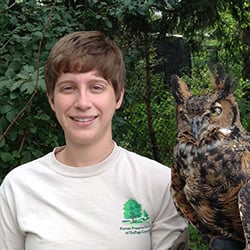
Every spring and summer, Willowbrook Wildlife Center admits hundreds of orphaned young birds. We give as much care as is humanly possible, but the best parent for a bird is always a bird.
Whenever possible we look for ways to keep chicks with their parents so they have the best chance for success for a wild life. You can help keep chicks with their families by following the below advice for dealing with problematic nesting sites.
Mother birds face challenges even before their babies hatch. The first thing they must figure out is a safe place to build a nest.
Our modern landscapes often prove confusing to birds, and sometimes what seems safe to a bird can be a bother to people, or downright dangerous. Willowbrook helps people navigate some tricky nesting situations. Below are some common nesting site snags and how best to troubleshoot them.
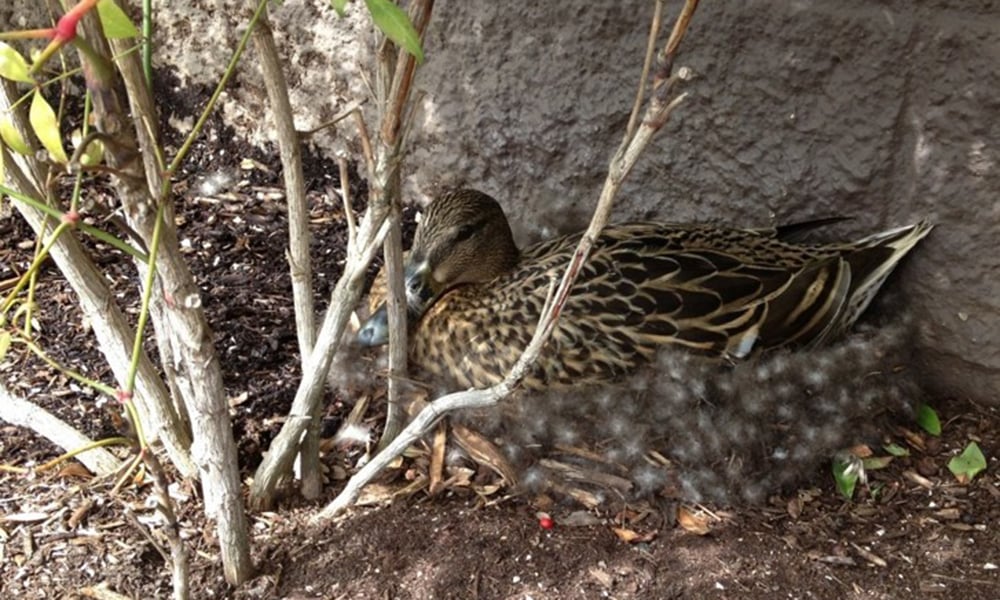
Scenario 1: Waterfowl Nesting Far from Water
You are concerned for a nesting duck/goose because the nest seems too far away from a body of water.
If you see a mother duck or goose nesting far from the nearest pond, some points to keep in mind:
- Waterfowl naturally nest far (sometimes miles) from a body of water and their babies can walk miles to get to it.
- The parents have a good mental map of the area and know where the water is located.
- Relocating healthy birds is stressful and ILLEGAL without state and federal permits.
Willowbrook’s advice: No interference is necessary. In most cases, the parents know how to get their chicks to water. If it’s safe, you can help them cross roads, but leave the rest to them.
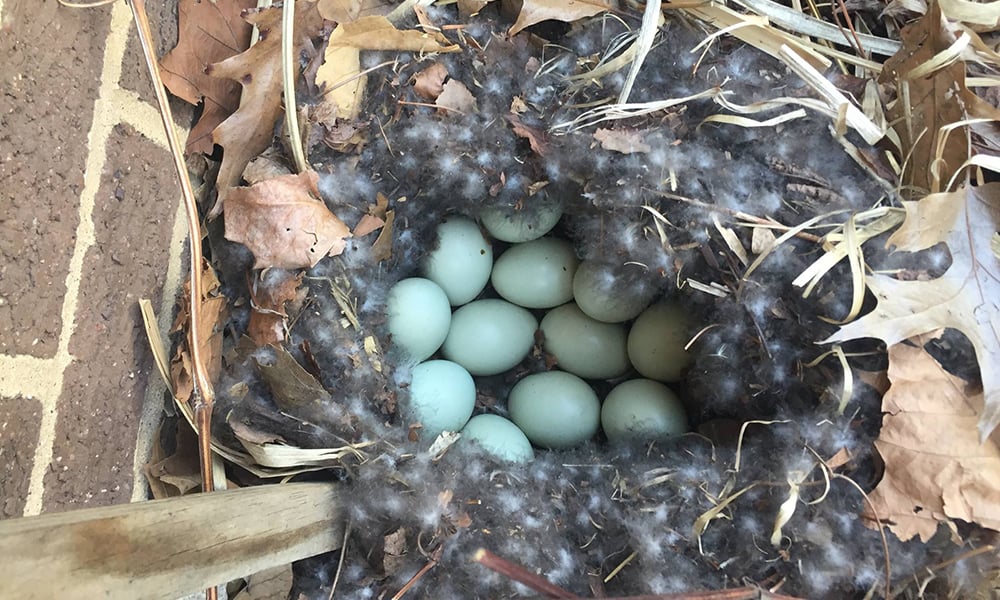
Scenario 2: Ducks or Geese are Stuck in a Courtyard
The parents can jump over the walls but the chicks are trapped.
There are three options with this one to get the chicks outside:
- Lead or herd the parent(s) and babies through the building. Use your body or some sheets or boards as baffles and slowly encourage the parents to walk out through the building's hallways. Where the parents go, the chicks will follow.
- Collect the chicks in a box and lead the parents out. They will follow the sound of the chirping ducklings/goslings.
- Collect the babies in a box and place them outside of the courtyard wall. The parents will hear and fly to them, at which point you can tip them gently out and leave them to it.
Willowbrook’s advice: Action is needed in this situation. The chicks will eventually perish if they cannot gain access to food and shelter. Any of the above options may be appropriate depending on how quiet the building's halls can be and the parents’ behavior. The first option is optimal because it’s the least stressful for the chicks but may not always work.
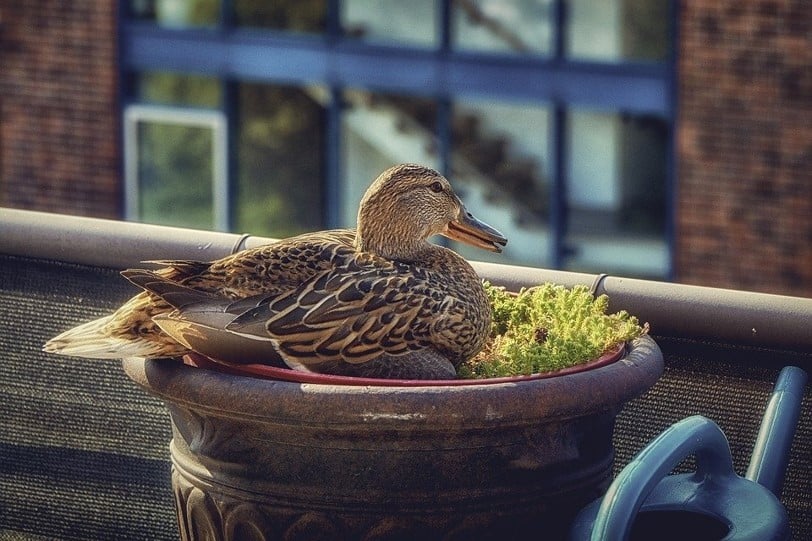
Scenario 3: Ducks or Geese are Nesting on Top of a Tall Building or Balcony
The parents can fly away, but the young have a big drop to the ground.
Again, it’s good to consider the natural history of these animals before becoming unduly worried. Ducks (and sometimes geese) will naturally nest high up in trees, and tall buildings duplicate that kind of security. Chicks are light and very bouncy, and are able to survive long falls to the water or ground. That said, if the young are perched several stories high over a hard concrete surface, or over a city street, a helping hand might be needed.
Willowbrook‘s advice: If help is needed, follow the third option in the second scenario by collecting the babies and placing them on the ground outside the building. When the parents follow them, tip them out and let parents and chicks reunite. Again, let the parents take it from there.
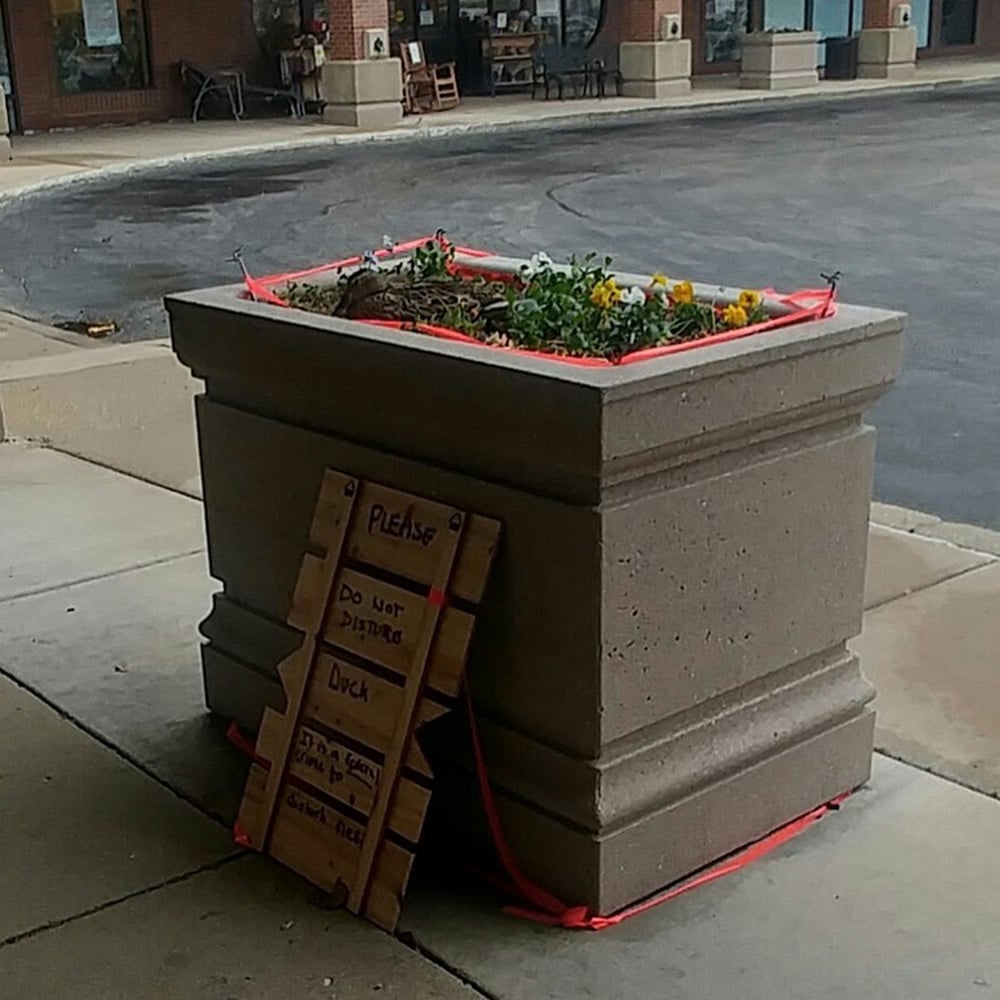
Scenario 4: A Nest is in a Dangerous Place
The mother bird and/or her eggs are in danger of being disturbed where they are located.
According to the Migratory Bird Treaty Act of 1918, it is illegal to disrupt the active nest of a native bird, or move young from a nest. A nest is active if there are eggs or chicks in it.
Willowbrook’s advice: If the nest is in a dangerous area and not yet active, go ahead and remove it BEFORE any eggs are laid. Make sure to bird-proof or place deterrents to keep another bird from building a nest in that spot. If there are eggs, and the site is merely inconvenient or slightly concerning (like a high-traffic area in front of a store), do your best to keep people from disturbing the nest and remove it after the young have left.
If the spot is too dangerous to leave the eggs there and waiting is not an option, (ex. in a dryer vent, in construction equipment, in a tree that has to be cut down) it may be possible to move the nest and eggs or make an artificial nest. The success of this depends on species and how closely you can place the new nest to the old one. See more on artificial nest-making at dupageforest.org. If that does not work, the last option is to bring the nestlings to a licensed rehabilitator.
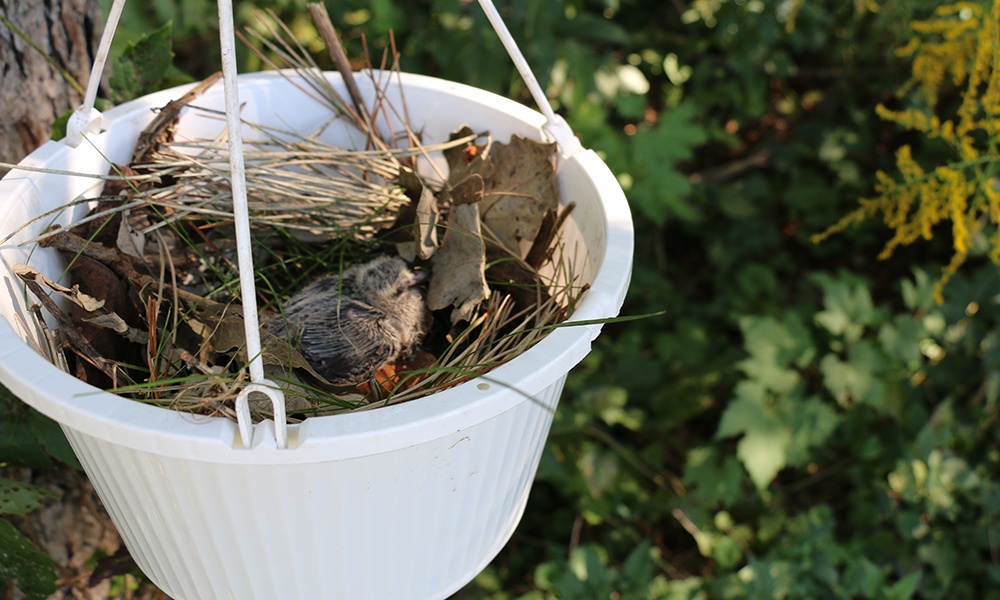
Scenario 5: A Nest Has Fallen Down
A songbird nest with chicks in it has fallen out of a tree.
Often nests can be put back up, or put in a sturdy bowl, basket or planter and placed back in the tree.
Willowbrook’s advice: if the chicks look injured (ex: bent limbs, bruising, bleeding), bring them into Willowbrook to be examined. If they look unharmed or are deemed healthy after an exam, they can be put back up in their original nest or in an artificial nest. As always, place them as close as possible to their original nesting site for the best chance that mom and dad will continue to care for them.
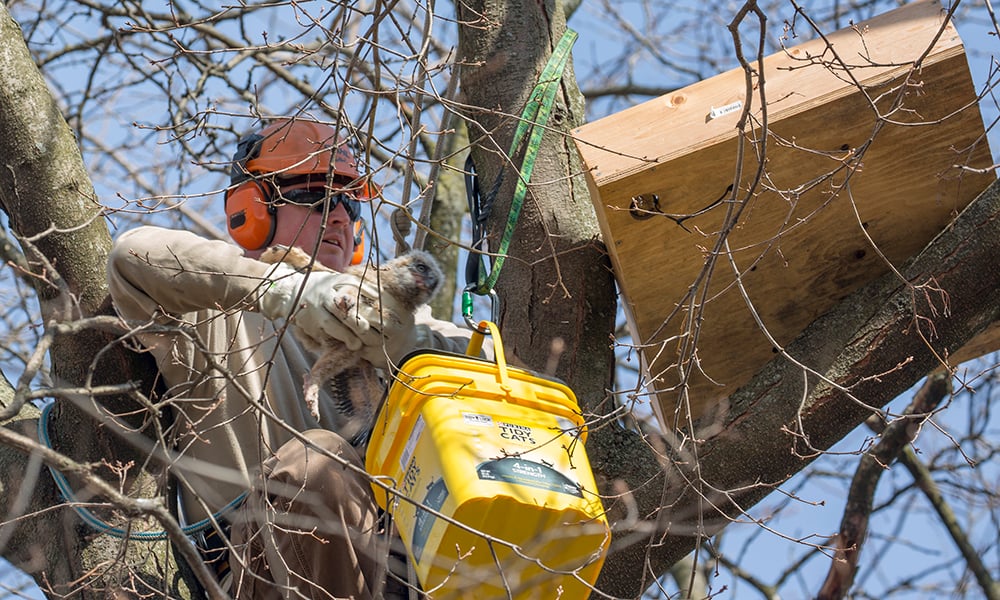
Situation #6: A Nest has Been Abandoned
Nothing seems to be happening at the nest and there are eggs left inside.
Before anything is done, you need to make sure the nest is truly abandoned. You can figure this out by determining the bird species, its laying rate and incubation time. Abandoned nests and eggs can be disposed of in the trash. There are a couple of reasons to dispose of an old nest: it keeps other birds from nesting there in the future (for example in a cavity or bird house), or the nest is in a space that people would like to use (like a grill or on a car tire). In this case, deterrents should then be placed to make sure the nest site is not used again.
Willowbrook’s advice: Call us before disposing of a nest so we can help determine if it’s truly abandoned. Do not bring us eggs — most rehabbers, including Willowbrook, do not have the resources to incubate them, nor is there a good chance the eggs will be viable.
Every situation presents its own unique challenges. Please call Willowbrook (630-942-6200) or email us at willowbrook@dupageforest.org for help troubleshooting the above situations in more depth or if you have any other questions about our avian neighbors. 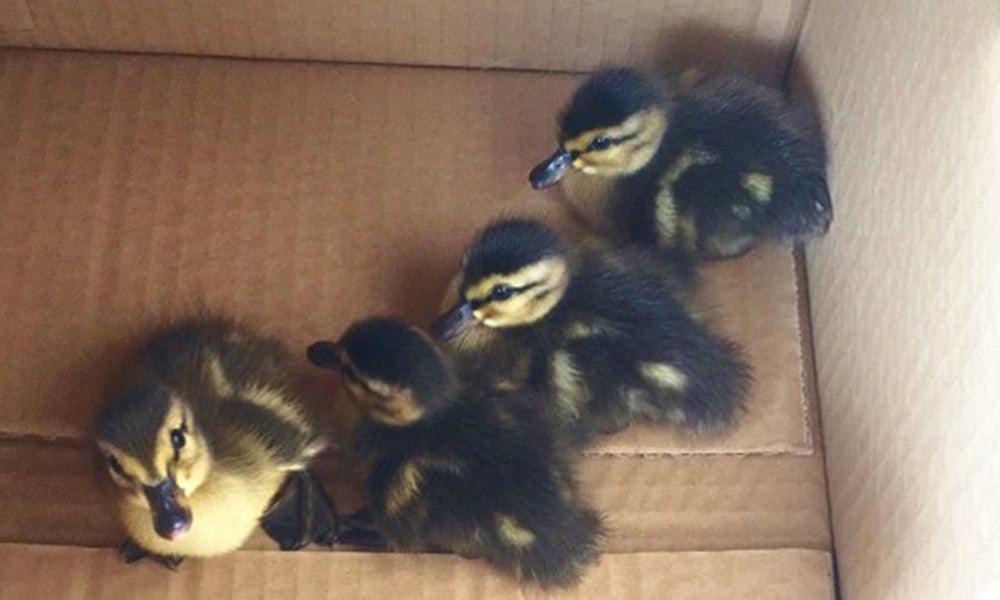
Leigh Korreck
